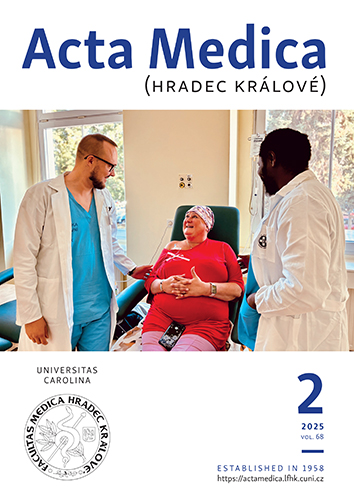ACTA MEDICA, Vol 66 No 4 (2023), 138–145
Current Diagnosis and Management of Acute Pulmonary Embolism: A Strategy for General Practitioners in Emergency Department
Joshua Eldad Frederich Lasanudin, Sidhi Laksono, Hillary Kusharsamita
DOI: https://doi.org/10.14712/18059694.2024.8
published online: 02. 04. 2024
abstract
Pulmonary embolism (PE) is a disease with a relatively good prognosis when diagnosed and treated properly. This review aims to analyse available data and combine them into algorithms that physicians can use in the emergency department for quick decision-making in diagnosing and treating PE. The available data show that PE can be excluded through highly sensitive clinical decision rules, i.e. Pulmonary Embolism Rule-Out Criteria (PERC), Wells criteria, and Revised Geneva criteria, combined with D-dimer assessment. In cases where PE could not be excluded through the mentioned strategies, imaging modalities, such as compression ultrasonography (CUS), computed tomographic pulmonary angiography (CTPA), and planar ventilation/perfusion (V/Q) scan, are indicated for a definite diagnosis. Once a diagnosis has been made, treatment of PE depends on its mortality risk as patients are divided into low-, intermediate-, and high-risk cases. High-risk cases are treated for their hemodynamic instability, given parenteral or oral anticoagulant therapy, and are indicated for reperfusion therapy. Intermediate-risk PE is only given parenteral or oral anticoagulants and reperfusion is indicated when anticoagulants fail. Low-risk cases are given oral anticoagulants and based on the Hestia criteria, patients may be discharged and treated as outpatients.
keywords: pulmonary embolism; clinical decision rules; physicians

Current Diagnosis and Management of Acute Pulmonary Embolism: A Strategy for General Practitioners in Emergency Department is licensed under a Creative Commons Attribution 4.0 International License.
210 x 297 mm
periodicity: 4 x per year
print price: 150 czk
ISSN: 1211-4286
E-ISSN: 1805-9694
